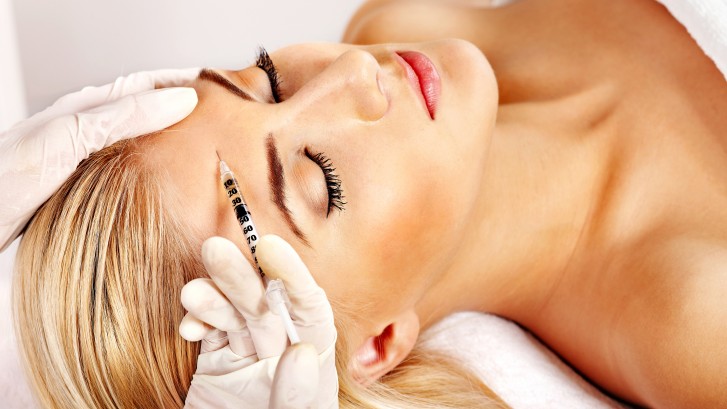Micro-dermabrasion Benefits

Micro-dermabrasion Takes Years Off Your Face
Your skin is overexposed to environmental elements and pollutants every day. Over the years, other damaging agents, along with the sun’s rays can result in wrinkles, fine lines, age spots and undesired pigmentation.
Micro-dermabrasion treatment can help reduce or eliminate these side effects, and restore your complexion back to a smoother, brighter and more even tone.
Micro-dermabrasion – What is It?
Microdermabrasion is a non-chemical, non-invasive procedure that uses microcrystals to exfoliate the outermost layer of dry, dead skin cells. This process encourages the production of a new layer of skin cells with higher levels of collagen and elastin. As a result, microdermabrasion reveals younger, healthier-looking skin
How Does Micro-dermabrasion Work?
During a micro-dermabrasion treatment, a stream of micro aluminum oxide crystals is applied to the skin through a hand piece. These crystals exfoliate the skin, leaving skin debris and excess crystals on the skins surface, which is then removed from through a micro-dermabrasion system.
Microdermabrasion helps produce healthier, thicker skin layers, and multiple treatments are vital because they encourage the production of collagen and elastin. Both of these components are essential for vibrant, healthy skin and complexion.
It is recommended that five to twelve treatments; two to three weeks apart are needed to maximize the full micro-dermabrasion benefits. And because the procedure takes only 30-60 minutes, it is commonly referred to as the “lunch hour facial.”
How Do I Prepare for a Micro-dermabrasion Procedure?
Pre-treatment instructions will be provided by your skincare professional or plastic surgeon. Prior to your scheduled appointment, you will need to disclose your medical history and perform a physical exam. Some questions you may be asked include the following:
* Open sores, wounds, or cuts on your face that can lead to infection
* Medication that makes your skin sensitive
* Any skin conditions that may be exacerbated by microdermabrasion
In advance to your procedure, your surgeon will ask you to:
* Stop smoking at least six weeks before undergoing surgery to promote better healing
* Avoid taking aspirin and anti-inflammatory drugs that can cause increased bleeding
* Hydrate well before and after surgery for safe recovery
On the day of your procedure, come prepared with a clean face without too much makeup or skincare products.
Micro-dermabrasion Risks and Benefits
Micro-dermabrasion is a safe, non-surgical procedure that provides multiple benefits:
* Reduces or eliminates fine lines, wrinkles, enlarged pores, and other signs of aging
* Lessen the appearance of stretch marks
* Improves the appearance of acne scars and other light blemishes
* Improves hyperpigmentation and brightens skin tone
* Exfoliates the skin, resulting in collagen an elastin production
* Provides skin of all colors and types with a fresh, healthy-looking glow
Micro-dermabrasion does not present serious risks when performed by a qualified provider. While the risks are very rare, you may experience slight skin irritation after the procedure. This tends to disappear within a day. On occasion, the skin may bruise, burn, sting or become sensitive to sunlight. These, too, will go away without treatment.
Micro-dermabrasion is not recommended for candidates who have deep scars, active keloids, active acne (stages 3 and 4), an auto-immune system disorder or unstable diabetes. Candidates who are pregnant should not undergo micro-dermabrasion.
Candidates who have recently received chemical peel or other skin procedure should wait two to three weeks before undergoing micro-dermabrasion. Individuals with deep scars, facial creases or other moderate-to-severe skin defects should consider a stronger treatment such as chemical peel, dermabrasion or laser skin resurfacing.
What is the Aftercare and Recovery?
Your surgeon will provide you detailed instructions about your post-surgical care, and discuss how long it will be before you can return to your normal level of activity and work.
The post-operative care will include information about normal symptoms you will experience and potential signs of complication.
Depending on your skin sensitivity, the suction and exfoliation might cause some mild swelling and redness on your skin. This will disappear and normalize after applying moisturizer with SPF. Makeup can be applied and you may return to your normal daily activity as instructed by your surgeon.
As with most non-invasive procedures, it is recommended that you wait twenty-four hours before doing strenuous activity. If you have extreme or long-lasting pain or notice redness and swelling consult your surgeon.
How Long Will the Results Last?
Within a few days following micro-dermabrasion, you will notice a healthy glow. For best results, repeated treatments will be needed to maintain. For maximal results, five to twelve treatments, spaced two to four weeks apart is recommended.
Schedule a Consultation with Dr. Binder Today
Take years off your face with micro-dermabrasion. Don’t let fine line or wrinkles hold you back from feeling the way you want. Schedule a consultation with Dr. Binder today.

